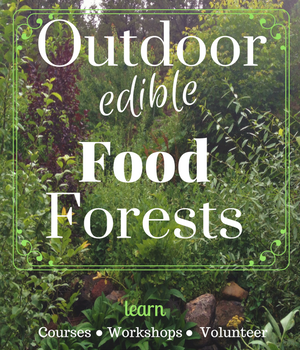|
|
|

Great Big Ideas & Takeaways:
- Enjoy a tour of Jerome’s food forest at 7,200 feet, and watch as he prepares various garden beds for winter.
- Hear Jerome’s thoughts on why you shouldn’t harvest everything from your garden.
- Surprising fruits and vegetables that grow well at high altitudes, in cold climates.
- Tips for attracting birds for insect control.
- One of the BEST herbal remedies for seasonal allergies.
- Secrets for lazy seed saving—straight off the plants.
About The Speaker:
A forager and permaculturist with roots in rural Nebraska, Jerome Osentowski lives in a passive solar home he built at 7,200 feet above Colorado’s Roaring Fork Valley.
Director and founder of Central Rocky Mountain Permaculture Institute and a permaculture designer for thirty years, he has built five greenhouses for himself and scores of others for private clients and public schools in the Rockies and beyond.
He makes his living from an intensively cultivated one acre of indoor and outdoor forest garden and plant nursery, which he uses as a backdrop for intensive permaculture and greenhouse design courses. Among his many accomplishments is hosting the longest-running Permaculture Design Course in the world, now at thirty years running.
With an engaging, down-to-earth teaching style that will having you laughing, expect this presentation to leave you feeling empowered to use these wonderful plants in your daily life.
QUESTION: Have you managed to grow anything “surprising” on YOUR property? Tell us about it!




You know, I’ve grown anything in high altitude cold climates, but I am thinking of moving to Colorado and trying it out for a while 🙂
It would be an interesting change from Texas…
what is the scientific name of this lamb’s quarters?
Chenopodium album i
Great …enjoyed the presentation on fall planting …TY 🙂
Thank you for this video. I enjoyed it very much. I was afraid I would be very limited in what I could grow on my future homestead and am inspired after watching this!
Another terrific video. Can’t wait to get out and do a monument (Swail?)
I have never planted spinach in fall. Hope I can find some seeds yet, so I can do tid.
Thank you all for this amazing education. You make my life so abundant.
Grateful for all of you. Digging in the dirt brings me peace. ????⭐️
Very interesting! Im curious if that hawthorne species is easy to get a hold of? What is this variety called? thanks so much for sharing the information and your wonderful place.
Pam
Yes! I would like to know what hawthorn this is. I know someone who after a major heart attack, was given a big bag of drugs to take. He consulted a herbalist who told him to throw them all away and he gave him a hawthorn tincture called cretageous, to take instead.
He had all sorts of tests over the next few months ans ALL were perfect, including ultra sound tests and blood pressure – everything.
So: I am a great believer in hawthorn!
Great tips, Jerome & Stephanie. And so great to see y’all putting lambs quarter seeds in a Susty raw milk jar!!!
What a great video – it made me feel right at home even though my garden is in Vermont. I’m excited to try interplanting fall spinach and garlic – what a great idea!
I’m in an even greater state of thanks tonight over the gift of this summit! First, for a change, despite the glitches some viewers are having, we have encountered blessedly few problems with our connection, despite living in a remote area of No. Wisc. where internet service is scant and chronically transient. Second, these presentations are even more pertinent than the great ones in previous years, as we are another year further in learning our land. Third, because I so many of the tropical foods I love and have fantasized about were discussed and showcased as within our reach (when we finally build a substantial solar greenhouse). Fourth, a couple of owners ago land we bought had been planted with many species Jerome has learned to nurture under conditions similar to the extremes of our climate. After about 20 years of neglect and a long drought, they have somehow survived, but we had no idea how to bring them back to full health and productivity until tonight’s presentation. So thanks again and many more times, Marjory and team. Jerome and Cheryl for such a radical advance of knowledge!
I enjoyed the video very much. Thank you both!
You introduced me to nitrogen-fixing plants.
Great….I just planted some garlic but have another bed where I will plant spinich, garlic rye and clover. Perfect.
Thanks for sharing.
Excited to get planting some spinach this fall, along with some garlic!!! thanks so much for the tips and the fantastic video. I live here in Colorado and now hope to come visit your institute sometime!!!
Fine use of time management: lots of examples of plants, techniques and benefits. Wordy presenters could learn from this video.
My garlic is already planted and mulched, but I may add some spinach seeds to the bed. For some reason, I usually don’t have much luck starting it in the spring.
I think I could spend 20 years their and learn something everyday.
I thank you.